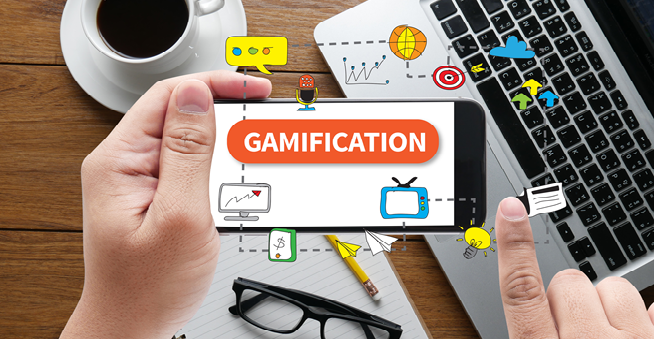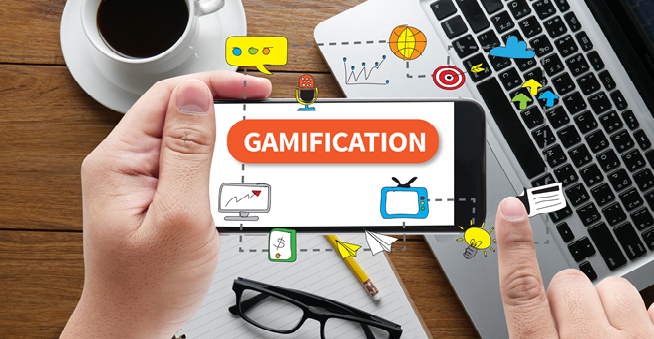
We live in an era where people expect from you to go ‘the extra mile’ when their experience is concerned. No one is happy and satisfied anymore with a good and stable mobile app and that’s where gamification entered the stage.
Gamification involves applying game dynamics from games to the mobile application at the same time encouraging users to return to the app.
Gamifying your mobile app can result in increased traffic and users’ engagement with the product if done properly — the whole process is based on principles of simple psychology.The Path of Mobile App Development in 2019 – Data Driven InvestorAnyone who works in the mobile app development industry, whether they focus on developing iOS apps in London or…www.datadriveninvestor.com
A user must become familiar with the app itself prior to any engagement in the app’s gamification — only then the user can get enthusiastic about the incentives your app has to offer (collectibles and/or points).
Gamification can relate to Maslow’s hierarchy of needs where gamification process follows the psychological principles because it deals with the engagement of the user’s mind.

Gamifying mobile apps enables users to compete with others or to complete their own goals — basic human psychology.
Gamified elements help to trigger a sense of achievement and thus motivates users to use your app even more. Creating such gaming experience within a non-game app will instantly make more pleasure for your users. You don’t need to rebuild your app, you can just offer some fun experience to your consumers and thus improve the interaction, attract more users or increase acquisition of your app.
There are different elements that can influence the way how people interact with a mobile app like rewards, quizzes, badges, virtual goods, leaderboards, and progress displays. All those elements help to create a unique experience for mobile users and encourage them to come back and try the app again. Moreover, a plus with gamification is that people tend to spread the word about ‘a great app I’ve tried’ which is an extremely valuable add-on.
GAMIFICATION ELEMENTS FOR MOBILE APPS
REWARDS
This is a great way to retain users — whenever we do something, we like to receive some kind of reward in return (material or not). The fact also applies to the mobile app users where people are more motivated if the app offers a prize for completing a certain type of task.
One example of this is Habitica — a gamified task manager which help you to turn your daily routine tasks into a fun game while helping you to organize your duties. They also offer rewards if you complete a level.https://cdn.embedly.com/widgets/media.html?src=https%3A%2F%2Fwww.youtube.com%2Fembed%2Fv2kRWywgePM%3Ffeature%3Doembed&url=http%3A%2F%2Fwww.youtube.com%2Fwatch%3Fv%3Dv2kRWywgePM&image=https%3A%2F%2Fi.ytimg.com%2Fvi%2Fv2kRWywgePM%2Fhqdefault.jpg&key=a19fcc184b9711e1b4764040d3dc5c07&type=text%2Fhtml&schema=youtube
QUIZZES
If this would suit your app description, hosting a quiz would be a perfect match for your users.
A survey from a few years ago revealed that quizzes are shared at least 1900 times! It would be a smart method to increase interaction with your app users, under the condition that it meets the requirements of your app.
If nothing else, the users would try to answer the questions out of fun. Use this asset for your advantage.

VIRTUAL GOODS
Virtual goods resemble rewards but with longer-term value.
For example, you can earn points on a certain mobile app which you can later on use for making a real purchase. Virtual goods are often used as a part of loyalty programs like with airline flyer miles which you can later use for payment of flights or specific upgrades etc.
An example that is interesting is Pocket Points — a mobile app that rewards students for NOT using their phones in the classroom. Afterward, the students can redeem their points in the local stores or online retailers.

BADGES
No matter how old we are, receiving a medal, a trophy or a badge of honor is a great moment for us. This is called recognition and that is an additional motivation for us to take on the next challenge.
If done right, badges are a powerful gamification tool to engage the users. One of the examples is an app Kobo — it offers their users these types of rewards plus you have the ability to connect with other people with the same reading preferences.

LEADERBOARDS
People are competitive souls and being able to see their name on the leaderboard can encourage a person even more to continue.
This is great for sports apps like Nike + Move where the app tracks people’s moves turning it into Nike Fuel and upon finished session, a leader-board is added which improves the entire experience. Higher the score, the greater the motivation.

PROGRESS DISPLAY
Progress display is very important to people when they struggle to achieve their goal.
Whether it is losing weight or learning a new language, progress display is an excellent way to retain users and support them throughout their way.
A great example is Duolingo — it has a set of gaming interactions that allow users to track their progress and practice their linguistic skills. In the past, users could always see their progress and it would help and motivate them to do more. Nowadays, it is replaced by Coach element, but the core is similar although people preferred a clean, simple progress bar.
Another example is Monitor Your Weight app which was awarded several times.

HOW TO DO IT EFFECTIVELY
- SET GOALS — you need to define from the start what do you want to achieve with your improvements. Set up a plan and decide which elements are the best to enhance the experience.
- IDENTIFY TARGET USERS — you need to identify the target audience, their age, interests, and behavior. Analyze the same as the data can play a huge role when defining how your strategy should be developed.
- CREATE VALUE — the whole point of adding game-like elements is to convince the users that your app is just what they need for their purposes. Think about efficient rewards or interesting features that suit your app purpose and that can make your users engage with your app even more.
- SIMPLE AND REAL — don’t transform your app entirely, just add efficient improvements so to increase their interest. Make sure to add only tangible achievements like badges, discounts, rewards, etc. that are real to your users. And always remember, keep it SIMPLE so not to confuse people with complex structures which would have a counter effect.
- SOCIAL SHARE — the easiest way for people to talk to their friends about your app, provide them with an easy way to do it — through sharing on social networks. Don’t forget to integrate platforms like Facebook, Twitter etc. into your game. It is one of the best strategies for increasing your user base.
- MONITOR USER FEEDBACK — regular checking on user reviews and feedback is a valuable insight. Update and optimize your gamified strategy based on these inputs and try to add features which will make users feel more competent.

BENEFITS OF GAMIFYING YOUR MOBILE APP
Borrowing some elements from games and adding them to your app will help you to increase user acquisition because people talk and people love to share. It enables word of mouth and spreading the word about your product will help you to bring in the new users.
Once the users realize the potential of your gamified mobile app, it will be a good reason to share it with their friends.
Gamification is revolving around the user — gamified elements increase ‘stickiness’ of your app so the result is increased user retention.
If you enable an ‘adventure’ with your game elements for your users, you will definitely have returning customers who truly enjoy your app.
If you provide triggers for your users (notifications, badges, etc.) it will result in developing a powerful relationship with your app and brand in general as per Nir Eyal, the author of Hooked: How to Build Habit-Forming Products. And today’s marketing and sales are all about relationships.

FINAL THOUGHT
The ultimate goal of gamification is to create ‘sticky’ apps that people will keep coming back to and get more engaged while using it.
Gamification works best when having a social sharing element which is why mobile is the perfect platform. This is also an upside for your brand — the more people share their experiences the more likely others will want to join the adventure.
But bear in mind that gamification is NOT a makeover tool — if your app is not working properly, if it’s broken or if gamification process inside would be pointless, there’s no use in trying to gamify it.
